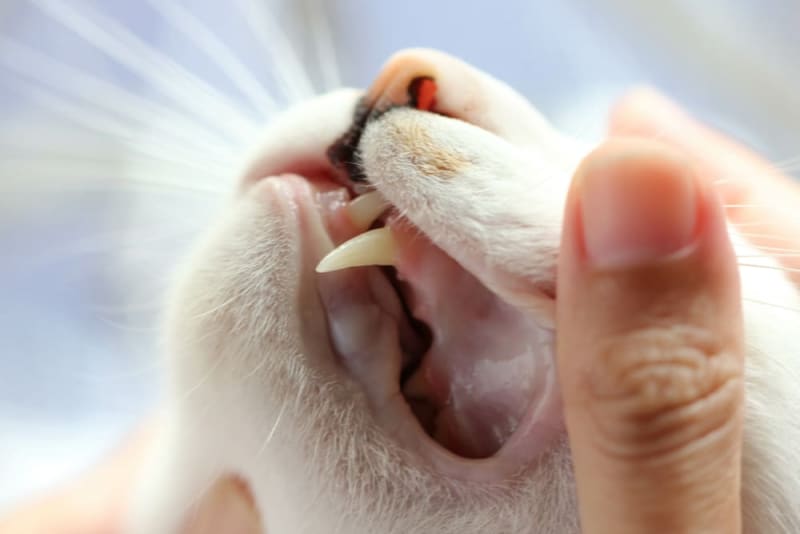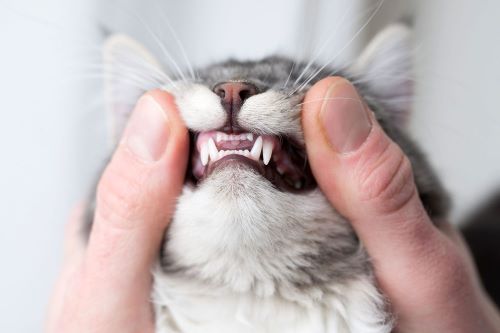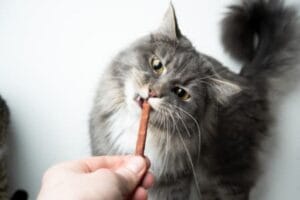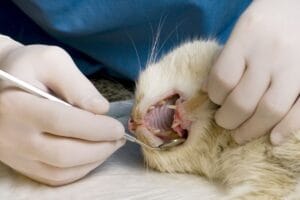Cat Tooth Extraction Aftercare: Ensuring a Smooth Recovery

Cats are known for their agility, independence, and, of course, their sharp teeth. These teeth play a crucial role in a cat’s life, helping them capture prey and maintain their overall health. However, just like humans, cats can experience dental issues that may require tooth extraction. While the thought of a tooth extraction for your cat can be quite scary, it’s necessary to alleviate pain and prevent further complications.
In this article, we will delve into the world of cat tooth extraction aftercare, providing you with essential tips to ensure a smooth and comfortable recovery for your beloved pet.
Why Cats May Need Tooth Extractions
Tooth extraction in cats is typically recommended by veterinarians in cases of severe dental disease, trauma, or other oral health issues. Here are some common reasons why a cat may need a tooth extraction:
- Periodontal Disease: This is the most common reason for tooth extractions in cats. Periodontal disease is the inflammation and infection of the tissues surrounding the teeth, often caused by the accumulation of plaque and tartar. If left untreated, it can lead to tooth mobility and severe pain.
- Tooth Fractures: Cats can break their teeth due to accidents, fights, or chewing on hard objects. Fractured teeth can be painful and may require extraction.
- Feline Stomatitis: This severe oral disease causes inflammation and ulceration of the mouth’s soft tissues. Tooth extraction is sometimes the only effective treatment for relieving pain.
- Malocclusion: Cats can also have misaligned teeth that cause discomfort or inhibit normal eating. In some cases, these misaligned teeth need to be extracted.
- Tooth Resorption: A condition unique to cats, tooth resorption involves the body breaking down a tooth from the inside. It can be extremely painful, and extraction is often necessary.
- Oral Tumors: In some cases, oral tumors or growths can affect a cat’s teeth, necessitating the removal of affected teeth for diagnosis and treatment.
Regardless of the reason, the importance of good aftercare for tooth extraction remains the same!
Different Types of Tooth Extractions
Tooth extractions in cats can be categorized into two main types:
- Simple Extractions: These involve the removal of teeth that are visible and easily accessible. Simple extractions are typically performed when a tooth is damaged but not severely diseased.
- Surgical Extractions: Surgical extractions are more complex and involve the removal of teeth that may be impacted, broken below the gumline, or surrounded by infection or inflammation. These procedures often require sutures and more extensive aftercare.

What does the Tooth Extraction Process look like?
- Initial Assessment and Diagnosis: The process begins with a thorough oral examination by a veterinarian. X-rays may be taken to assess the extent of dental problems and determine the best approach for extraction.
- Anesthesia Administration: Anesthesia is administered to ensure the cat remains completely still and comfortable during the procedure. It allows for full sedation, eliminating pain and preventing movement.
- Preparation and Sterilization: The cat’s mouth is carefully cleaned and sterilized to minimize the risk of infection. The veterinarian and their team wear sterile gloves and use sterile instruments.
- Extraction Procedure: Depending on the condition of the tooth, the veterinarian may use different methods:
- Simple Extractions: If the tooth is relatively healthy with a single root, it may be gently loosened and extracted with forceps.
- Surgical Extractions: Teeth with multiple roots or severe damage may require more extensive surgical techniques. The veterinarian carefully removes the tooth from its socket, ensuring no fragments are left behind.
- Wound Closure (if necessary): In some cases, the extraction site may be sutured to facilitate proper healing. Absorbable sutures are commonly used, eliminating the need for their removal.
- Post-Extraction Assessment: Once the tooth has been removed, the veterinarian inspects the area for any remaining debris or signs of infection. X-rays may be taken again to confirm a successful extraction.
- Recovery and Aftercare: Pain medications and antibiotics may be prescribed to manage discomfort and prevent infection. The veterinarian provides instructions for post-operative care and at-home aftercare.

Immediate Post-Extraction Cat Care
After your cat’s tooth extraction procedure, it’s crucial to provide immediate post-operative care to ensure their comfort and a smooth recovery. This period immediately following the extraction is critical, as your cat may be groggy from anesthesia and may experience some discomfort. Here’s what you need to know about caring for your cat during this time:
What to Expect Right After the Extraction Procedure
- Grogginess: Your cat may be disoriented and groggy after the procedure, which is a common side effect of anesthesia. They may appear drowsy, unsteady on their feet, or even slightly agitated.
- Bleeding: Some minimal bleeding from the extraction site is normal during the first 24 hours. You may notice a small amount of blood on your cat’s gums or in their saliva. However, if bleeding is excessive or persists, contact your veterinarian immediately.
- Drooling: Excessive drooling is also common post-extraction. This is due to the numbing agents used during the procedure, which can affect your cat’s ability to control saliva.
Monitoring Your Cat’s Condition and Vital Signs
- Temperature: Monitor your cat’s body temperature using a digital thermometer. Normal cat body temperature ranges from 100.5°F to 102.5°F (38°C to 39.2°C). If their temperature falls outside this range, contact your vet.
- Breathing: Check your cat’s breathing rate. A normal respiratory rate for a cat is around 20-30 breaths per minute. Rapid, labored breathing or signs of distress should be reported to your vet immediately.
- Pain and Discomfort: Pay close attention to your cat’s behavior. Signs of pain or discomfort may include excessive vocalization, restlessness, and reluctance to eat or drink. There is also a chance that your cat will not pee for an extended period of time after the surgery. If any symptom persists for more than 48 hours, contact your vet.
Administering Post-Operative Medications
Your veterinarian will likely prescribe pain medications and antibiotics for your cat’s aftercare. It’s crucial to follow the prescribed medication schedule meticulously:
- Pain Medications: Pain management is essential to keep your cat comfortable. Administer pain medications exactly as prescribed by your vet. Do not skip doses or discontinue them prematurely.
- Antibiotics: To prevent infection, administer antibiotics according to your vet’s instructions. Finish the entire course, even if your cat appears to have recovered before it’s complete.
- Anti-Inflammatory Medications: In some cases, your vet may prescribe anti-inflammatory drugs to reduce swelling and discomfort. Follow the dosage instructions carefully.
- Homemade remedies: Applying a cold compress to the surgical site can help reduce pain and swelling. Gently press it against the affected area for short intervals (about 10 minutes) several times a day. Some cat owners explore natural remedies like herbal supplements or CBD oil for pain relief.
Remember that each cat’s response to anesthesia and surgery varies. Some may bounce back quickly, while others may take a bit more time to recover fully. Don’t panic if it takes your cat a little longer (or less) to recover.
Feeding and Hydration
Maintaining proper nutrition and hydration during your cat’s recovery is essential for their overall well-being and healing process. Here’s how to ensure your cat gets the nutrition and hydration they need:
- Soft Food: After a tooth extraction, your cat may have difficulty chewing hard kibble. Opt for soft, wet cat food during the recovery period. This will be easier for them to eat and won’t irritate their healing gums. If sutures have been used, it is recommended not to feed your cat solid food for at least a week (to ensure the sutures hold).
- Pate-Style Food: Choose pate-style cat food, as it’s smooth and doesn’t contain chunks that may be difficult for your cat to manage.
- Appetite Stimulants: If your cat is reluctant to eat, your vet may prescribe appetite stimulants to encourage them to eat.
Your cat may lose their appetite as a part of their recovery process, so you need bring your 100% to the table (literally). Bring out your cat’s favorite snacks, hand feed it (this tends to increase engagement), and make sure the food is warmed!
Signs of Infection or Complications to Watch For
- Redness and Swelling: Keep an eye on the surgical site for any unusual redness, swelling, or discharge. These can be signs of infection.
- Foul Odor: If you notice a foul odor coming from your cat’s mouth or the wound, it could indicate an infection.
- Fever or Lethargy: Elevated body temperature, lethargy, or a significant decrease in activity may also be signs of infection or complications.
Seek veterinary care promptly if these symptoms manifest.
Conclusion
By following these detailed guidelines for Cat Tooth Extraction Aftercare, you can help ensure that your cat has a comfortable and successful recovery following a tooth extraction procedure. Remember that every cat’s recovery experience is unique, so stay vigilant!


